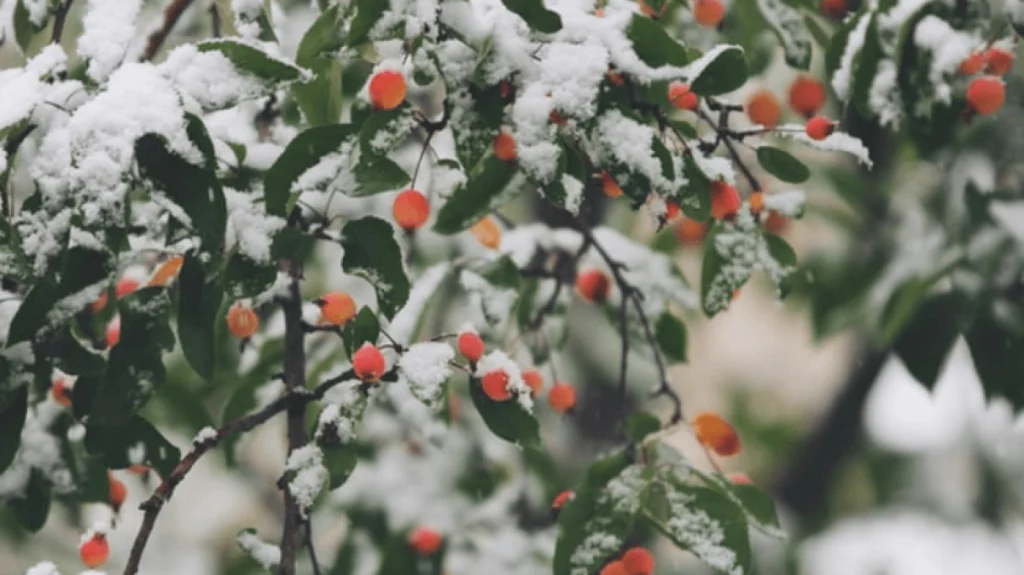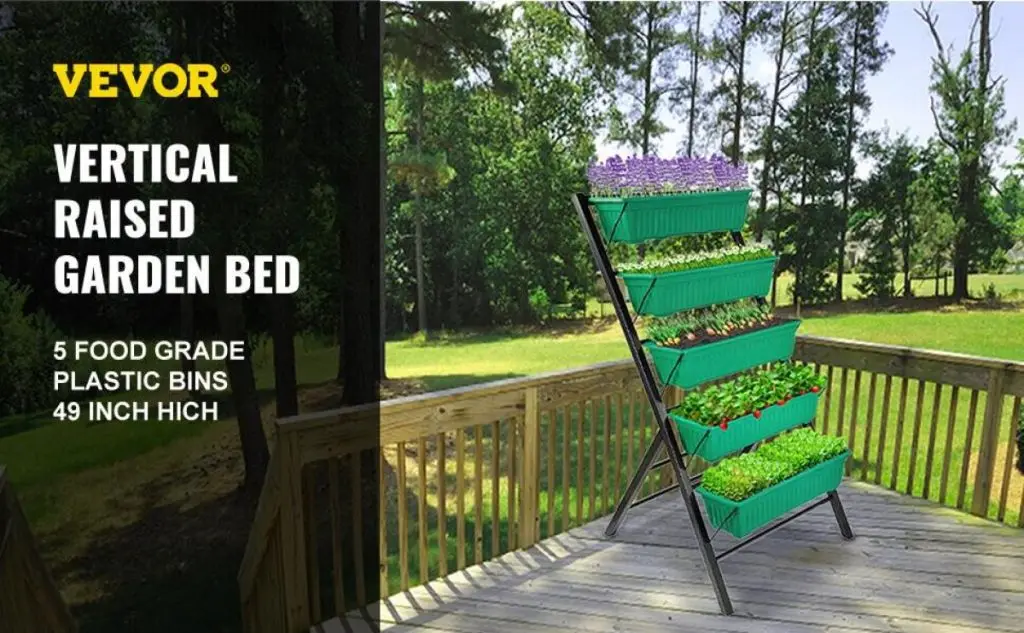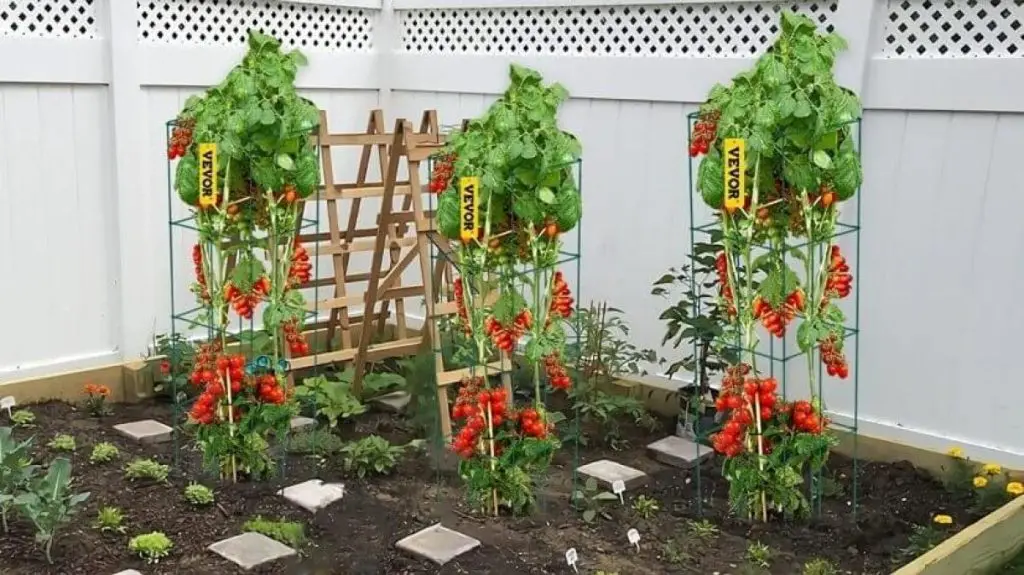We might be seeing sunny days often right now, but the picture will change with the changes in the pages of the calendar. Every living and non-living thing on the planet receives the impact of the dramatic fluctuations in mercury readings, including plants.
Being biological organisms, they depend on light for food and heat. So, you might see most of their leaves dropping dead with the onset of winter. The crops and houseplants that have adapted to thrive on sunrays will suffer tremendously.
This section discusses simple tips and tricks for keeping plants warm in winter. It is a basic guide to help you keep your plants warm over the cold months and ensure they don’t give in to plummeting temperatures.
5 Ways to Keep Plants Warm in Winter
As days become shorter and winter approaches, making arrangements to keep your plants safe becomes more than necessary. Here are five ways you can attend to their needs and help them withstand harsh temperatures:
1. Adjust Your Watering and Fertilizing Routine
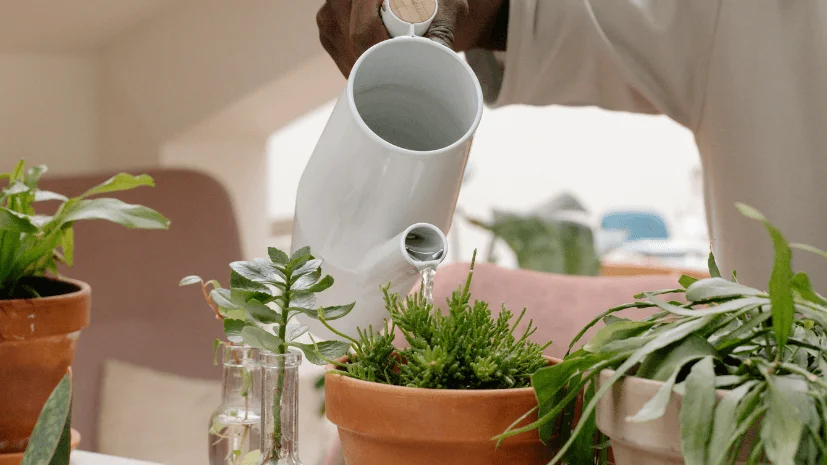
Water requirements of the plants change with the changes in the environment. In winter, flora does not need as much water as they do in summer. So, they are susceptible to overwatering, especially the ones that you have indoors. Besides, water has a natural cooling effect that will cause the leaves to turn yellow and wilt in cold temperatures.
Try spraying water mist to prevent overwatering and keep the plants warm in winter. Also, check the soil before pouring water. Push about 2 to 2.5 inches deep into the soil and water only if it comes out completely dry.
Another way to keep the plant leaves from withering is by reducing the number of times you feed them. Sure, fertilizers promote new leaf growth, but there is more to the story. The real curse begins when freshly sprouted leaves succumb to the cold.
2. Cover and Insulate Your Plants
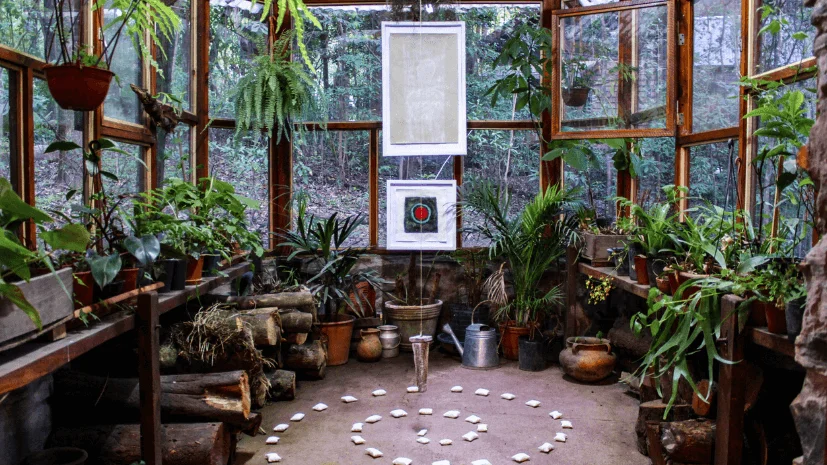
While air and optimal light is useful to plants during the day, covering at night is essential for keeping plants warm in winter. Keeping the frigid frost or freezing rain at bay ensures the leaf blades will not spoil. Cover the plant with an old blanket or a drop cloth, but make sure it does not touch the leaves and there is a breathable space.
If you are wondering how to insulate your plants in winter, that is also a simple process. Pitch plant support stakes in the ground a few inches out from the plant, and construct a frame. Then, create a burlap wall around it and fill the space with hay or any other natural insulator.
3. Arrange Your Plants in Clusters

Clustering your plants and arranging them in groups can be useful in keeping outdoor plants warm in winter.
Keeping the plants close conserves both temperature and moisture. Densely packed leaves make it hard for the cold air to flow between them, preventing the cluster from drying out. Moreover, the packed canopy will hold more moisture and heat, thus reducing leaf blade damage due to the frost.
4. Invest in a Greenhouse or an Indoor Grow Tent
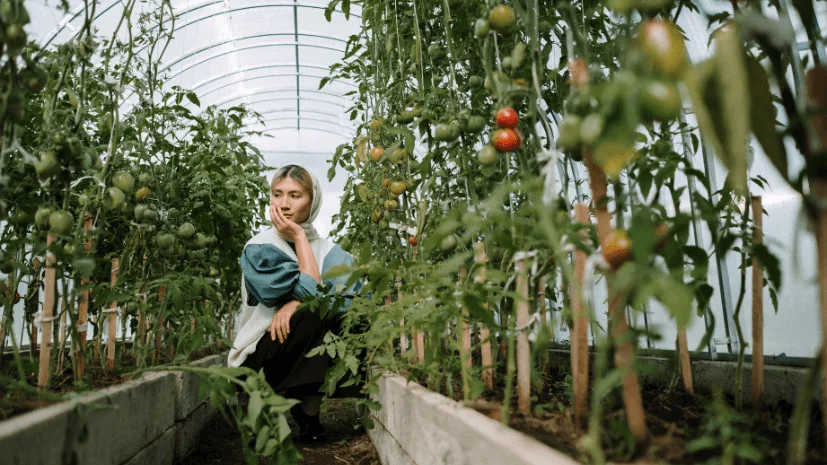
Greenhouses and grow tents are two viable options for keeping your plants warm in winter. Both structures work by trapping heat, moisture, and light to keep the plants warm and provide them with an optimal environment.
A greenhouse is a popular choice for keeping outdoor gardens warm because they are large in size and work by trapping natural light.
On the contrary, a grow tent is better suited for indoor usage and small plants because it is space-efficient and convenient. These structures offer greater control over temperature, humidity, and light, thus making it easier to grow a variety of plants inside your home.
5. Use a Heat Lamp for Plants
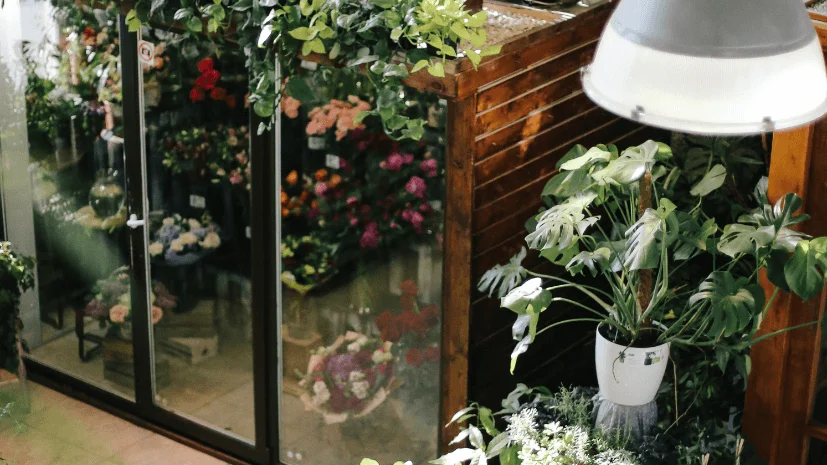
You can keep your plants warm in winter using artificial illumination. Both incandescent and fluorescent lamps can fulfill the energy requirements of the herbs in your house, keeping them from dying in the cold.
A heat lamp for plants in winter can be a ray of life, especially on the days the sun refuses to come out. These heating devices do more than just provide the flora with light. They emit unseen infrared radiation that warms the air enough to aid plant growth.
Tips for Keeping Plants Warm in Different Situations
Every plant has different needs depending upon how and where you place it. Be it indoors, outdoors, or in a pot, there is always a way to take care of your plants in winter:
1. How to Keep Plants Warm Outside
● Space Heater: A space heater might not be a very inexpensive way to keep your plants warm in winter, but it is worth the money. They aid leaf growth by maintaining perfect temperature constantly and preventing the old leaves from yellowing. These devices can work indoors but are more suitable for open spaces because exposure to carbon emissions can harm you or your children.
● Mulching: Protecting your plant roots is as critical as keeping the blades from succumbing to cold damage. Use mulch to insulate the soil, lock the moisture, and prevent the roots from withering. If you want to go the extra mile, try placing jugs of warm water in the mulch. However, if you do not have mulch, use hay as an alternative.
● Heat Mats: Heat mats are an expensive yet fantastic option for keeping plants warm in winter, especially at night. These mats are thin sheets of plastic with a heating system inside that draws power from the electric circuit of your house. Once plugged in, pop any plant pot on the top of the mat to keep it cozy.
2. Keep Indoor Plants Warm in winter
● Humidifier: Lower humidity levels during cold days act as a slow poison to the flora in your house. The optimum moisture level for most plants is between 50 and 60 percent. Thus, you will have to purchase a high-quality humidifier to prevent those beautiful green blades from wilting.
● Warm or Insulated Spot: Like humans, cozy indoors is also essential to keep the plants warm in winter. Try placing them in your living room or in a spot where cold or rain cannot hit them directly. It is even better if you arrange them in groups to lock the heat and reduce the chances of cold damage.
3. Keep Potted Plants Warm in winter
● Bubble Wraps: Horticulturists have used bubble wraps for decades to prevent heat loss during cold days. The plastic of the wrap and the air trapped inside the bubbles act like a double insulator for the plants. Coiling your plant pots in bubble wrap will be a quick, affordable, and effective way to contain heat.
● Top of the Fridge: The top of an electric fridge tends to heat up and act like a heat mat for your small potted plants. It might seem odd, but it is such a cost-saving hack to keep the plants warm in winter. You can place the pots above the fridge after wrapping them in bubble wrap to contain the heat.
How to Keep Tropical Plants Alive In Winter?
Coming from warm habitats, tropical plants are significantly temperate-sensitive. If you live in a cold region, you must make sure they survive the weather before bringing them home.
1. Pest Control
Tropical plants can act as pest magnets, especially when placed indoors. You can prepare a DIY disinfectant solution by mixing a few drops of dish detergent in water to keep the pests at bay. Spray the leaves thoroughly, and do not forget to get a good coverage of the rim of the pot and the surface underneath it. You can even use sticky cards to prevent bugs from attacking your plants.
2. Let them Go Dormant
You can keep your tropical plants alive until the next season by letting them go dormant.
For that, plant them into pots and wait until a few signs of the frost start appearing. Trim the tops from six to eight inches, move the pots to a dark spot, and water only when the soil looks bone dry. This way, the plants will go into their winter slumber and survive until the next season.
3. Check Soil pH
Tropical plants need a soil pH between 6.5 and 7.5 to survive. Low temperatures can significantly alter the soil pH, becoming detrimental to their life. If you notice acidity in soil due to snow or rain, neutralize it by adding lime or dolomite.
FAQs about Keeping Plants Warm in Winter
1. What temperature is too cold for plants?
Plants are extremely temperature-sensitive species. The tolerable temperature can vary depending on the species and the habitat. Usually, plants cannot tolerate a temperature below 40F (almost 4 Celsius). A temperature below freezing can damage the plants and cause them to retard their optimal functioning. Prolonged exposure to freezing temperatures can irreversibly damage the plants.
2. What do you cover plants with to keep them warm?
During cold weather, plants are covered to prevent damage. Different materials can be used to protect the plants, such as frost cloths and burlap or recycling old sheets or blankets. Indoor plants should be moved to a place to avoid direct cold wind. However, these coverings should allow sunlight and proper air circulation. Breathable fabrics or materials are better.
3. What is the best material to cover plants in the cold?
The best material to cover plants should have some optimum characteristics discussed hereafter. They should be breathable, i.e., they should allow maximum air circulation. They should let in proper sunlight. Adequate moisture should also be able to pass through.
Considering the above characteristics, a material like burlap, cotton fabrics, or makeshift coverings from old blankets work best.
4. How cold is too cold for tropical plants?
Tropical plants are very temperature-sensitive, so even small changes in their optimum temperature range can affect them heavily. Tropical plants cannot tolerate any temperatures below 50oF or 10oC. Tropical plants cannot survive below the threshold of 4oC. Cell and root damage gives way to plant death if a tropical plant is exposed to freezing temperatures for a prolonged duration.
5. How to protect the plants from the cold at night?
Steps can be taken to ensure plants remain protected at night during winter. Firstly, plants need to be covered at night during the cold. Secondly, the location should be optimized so that it does not risk the plant getting cold. Another option is covering the base of plants with mulch, which helps insulate against cold. Heat sources such as portable heaters or LEDs can create a cozy environment.
Here’s the Bottom Line
The arrival of frost can be an alarm of doomsday for many plants, but not anymore. VEVOR can provide you with all the necessary gear to keep your houseplants safe throughout the frigid cold.
There is a fair chance that you can save most, if not all, of your plants by taking our suggestions on how to keep your plants warm in winter. Not only your plants, these tips will work for your vegetable garden and protect your hard work from becoming a victim of cold. The process is not as challenging as it looks. All you have to do is ensure optimum levels of humidity, more coziness, and less heat loss.

